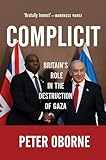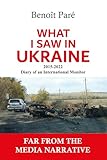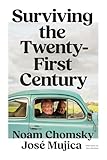An uncontacted man from the Mamoriá Grande area of Brazil who appeared at a settlement in an extractivist reserve in February 2025. © Anon
Experts working in the area where an uncontacted Indigenous man appeared last week say it reveals the acute pressures from landgrabbers and the extraction of forest produce in that part of Brazil’s Amazon.
The young man, from a group known as “Uncontacted people of Mamoriá Grande,” emerged last week at a settlement occupied by locals harvesting Brazil nuts and other forest produce in the southern part of Amazonas state. He returned to the forest the following day.
Brazil’s Indigenous Affairs Agency FUNAI finally issued a Land Protection Order (a temporary protection) over the area last December, decades after local Indigenous people reported the group’s presence. The area is, however, still not officially demarcated (mapped out and protected), and some local politicians are challenging the Order.
There is mounting pressure on the forest from illegal hunting, fishing and land grabbers in the region.
Video of an uncontacted man in the Mamoriá Grande area of Brazil has circulated widely online.
Zé Bajaga Apurinã, the Coordinator of local Indigenous organization FOCIMP (Federação das Organizações das Comunidades do Médio Rio Purus) says: “We’ve been asking for that territory to be protected for a long time. They did the temporary protection, but that doesn’t solve it. What really solves it is demarcation. Those people have nowhere else to go. People are invading, taking the wealth that’s inside the land, cutting down wood, fishing, hunting, everything in there. And they’re suffocating, they’re under threat. We need to set up a health cordon immediately and demarcate the land urgently.”
Public prosecutor Daniel Luis Dalberto works on uncontacted peoples’ issues. He was in the area last week and told Brazilian news site A Publica: “I have seen with my own eyes the risks [to] which these peoples are subjected. The risk of genocide or extermination is very high.”
Carlos Travassos is the former head of FUNAI’s uncontacted and recently-contacted peoples unit, and was also previously chief of the FUNAI base in the area. He told A Publica: “[Some parts of this region] are not legally protected and have been the target of land speculation, such as land grabbing. Funai’s Land Protection Order was very important. This is the end of the ‘arc of deforestation’, the most deforested region of the Amazon. It’s a region with a lot of land pressure.”
Survival previously publicized the vulnerable nature of the territory and the people in it, which until recently lacked even the most basic protection.
Survival International Director Caroline Pearce said today: “This alarming development shows how vital it is that this territory, like all uncontacted Indigenous peoples’ territories, is properly demarcated and protected as a matter of urgency. The government has taken years just to issue a temporary Land Protection Order, but the Indigenous people’s presence in this area has been known for decades, and land grabbing is now rampant.”
Note: Survival Brasil’s researcher Priscilla Oliveira was in the area with FUNAI shortly before the young man appeared, and is available to interview.












